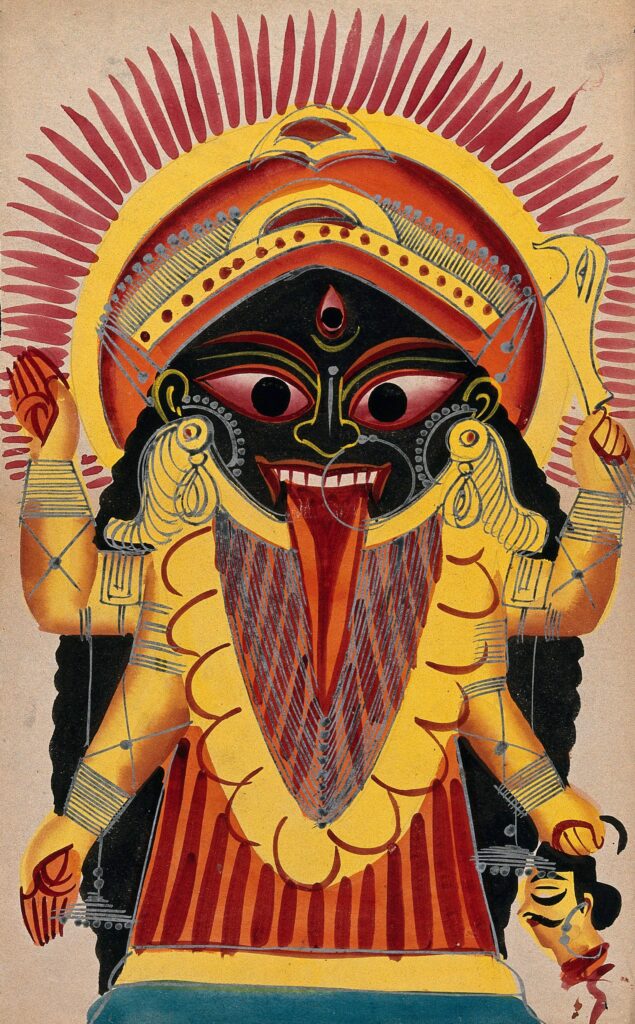The design research
My research journey during my master studies has led me from designing a method to writing The Surrationalist Manifesto, a manifesto for irrationality in design research.
I started out with the design question how the appeal of undesired human urges can be used in design methods to uncover and mitigate unforeseen harmful effects of a design. My intention was to design a Design Method that would use our own unwanted neglected traits to uncover unknown unknowns.
After experimenting with the enactment of evil characters from pop culture and reading about the role and power of myth and ritual I devised a method named Creator Destroyer. The creator destroyer is a recurring creature in mythologies around the world and has a resemblance with the role of the designer whose creations might have unforeseen destructive outcomes.
The method is based upon the form and role of folktales and rituals around the world. These traditionally play a role in dealing with the uncontrollable and unexpected aspects of life and have done so long before science and rationality took over this role.

Folktales and rituals not only deal with our personal fears, but also with the things in our surroundings that are beyond our control as storms, predators and sickness (Myth and ritual, Habermas, 2011). Through these rituals and enactments fears are materialized and the groups values are reinforced at the same time (Monsters, Musharbash, 2018). Costumes and especially masks are an essential part of these rituals as the mask gives the bearer the freedom to impersonate the other and to express all kinds of longings and feelings (Identity and masked rituals, Mathieu, 2017) in an agreed setting. It is a form of serious play in which the rules are reinforced by crossing them (Monsters, Musharbash, 2018).
In the Creator Destroyer method I designed, design teams have to imagine and create, a world and masked costumes of mythical creatures living in this world. Acting as the creatures and wearing the masked costumes, they must conspire together on how their design could be used to to make the lives of the people in this world miserable.
By getting the designers gradually into a world they created, the designers come into a state of play by creating their own ‘magic circle’ (a world of play with its own internal rules), an essential aspect for play according to Huizinga (Homo Ludens, Huizinga, 1938) and they had become creator destroyers.

The most surprising outcomes of the experiments with this method was that participants realized that their regular design methods left out large parts of the context as a whole. As these methods are focused mainly at the aim of their design in a rational way, they felt it also had hinderd them in really thinking out of the box. The method had lead them to a state in which they discarded all thoughts of reason and feasibility, according to the participants this was the reason they had really felt free to think of any (im)possibility. This led me to the idea that the contemporary view of the rational as the basis of design methods, leads to a blind spot covering part of the Unknown Unknowns. As the method I designed helped to uncover parts of the Unknown Unknowns by the use of the irrational in the form of folktales and mythical thinking I realized that the power of the irrational needs to be explored further in design research. This has lead me to my ultimate design the Surrationalist Manifesto. The Manifesto claims more room for the irrational in design research by using an irrational lens on top of our rational lens to research the world.
The new practice
During my research, the Creator Destroyer method has been tested by social designers, bachelor design students interaction and service design and by master students Applied A.I..
At the moment I am also working together with researchers in the field of intelligence and security studies of the University of Leiden and SoSecure. We are testing the usability of the method in the field of security, to uncover parts of the Unknown Unknowns that have been out of reach with current methods.
At the same time I want to disseminate my Surrational Manifesto in the field of design research in the hope to create more space for the irrational in design research.

Our dependence on the powers of reason
Jean-Pierre Dupuy, 2004
makes us defenceless against a headlong rush into the abyss
of global warming, nuclear holocaust, and the other catastrophes that loom on our horizon.
the designer

Djie Han Thung
I am a filmmaker, designer, and lecturer/researcher at the department of Communication and Multimedia Design at the Amsterdam University of Applied Sciences. Ever since I was young, I have been fascinated by the world, the way we see it and the conflicting way we deal with it, as a result of the often contradicting impulses in ourselves and the fact that we are animals that can reflect on our own thoughts and feelings. In myself this has led to an interest in science and art, in the love for contemplation and for experiences that make you forget to think, in the fun and the darkness of life and above all a curiosity for everything weird and wonderful. This has led me to be an artist, a designer, a filmmaker, a teacher and a researcher (although I once wanted to be a biologist). I love to explore the unknown and to share this with others through creating, whether it be in texts, images, films, methods, or lectures.
url publication
contact:dh@thung.nl
website




